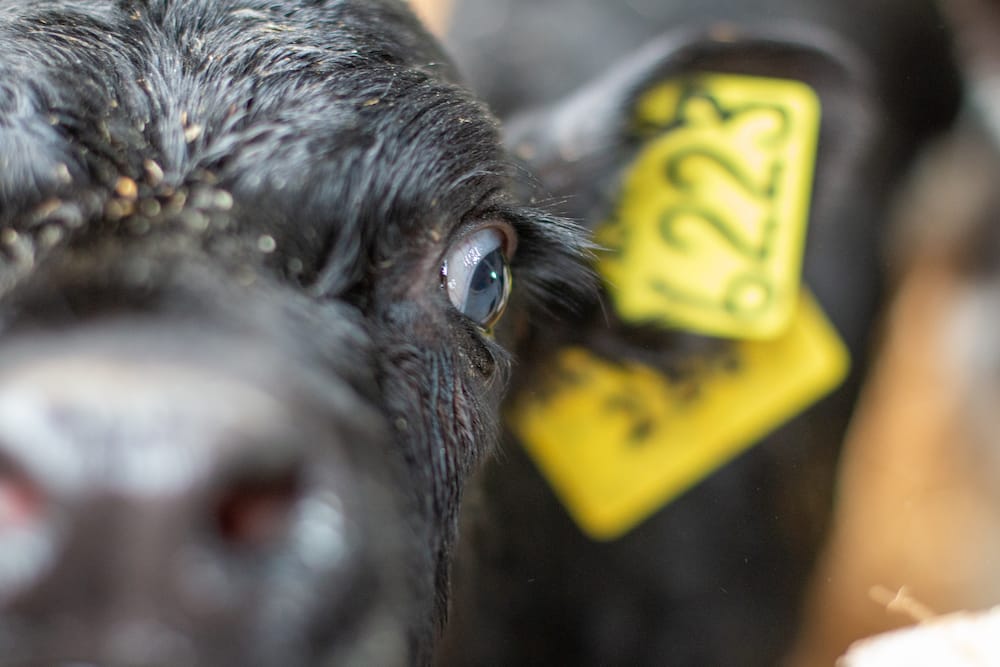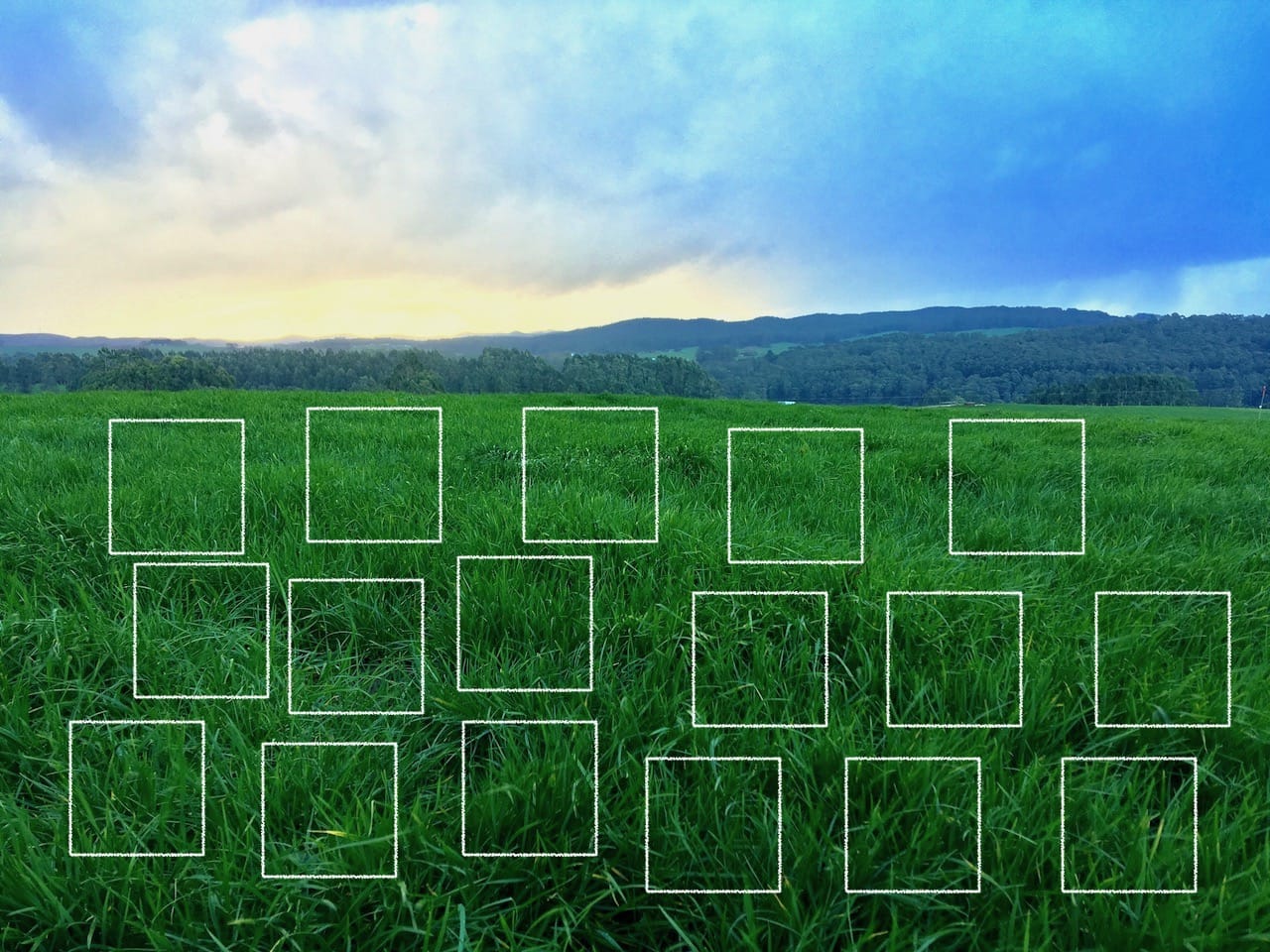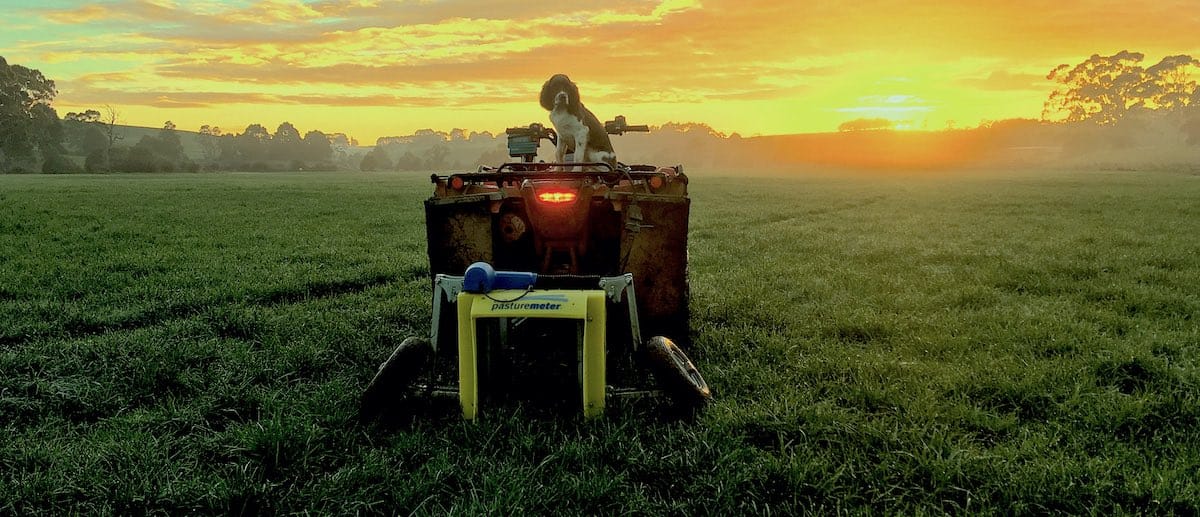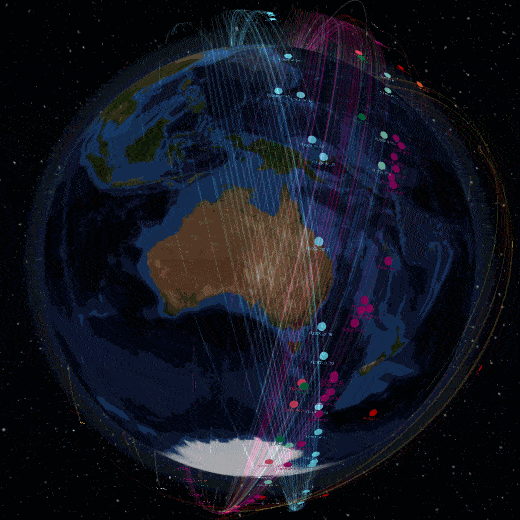Article Summary:
Pasture.io is a best-in-class pasture and grazing management tool that automatically produces daily food on offer for your farm. It does this with machine learning that incorporates weather and climate, satellite images, and paddock activities such as grazing events and fertiliser applications. With Pasture.io, you can check your phone in the morning before heading out and see what your pasture growth rates, pasture covers, or FOO are doing for each of your paddocks, along with pasture leaf emergence and other stats that keep you informed without having to step into the paddock. This article will explore some other options for measuring feed on offer as well as the Pasture.io app
Feed on offer (FOO) is the amount of pasture available for grazing, and is measured in kilogrammes of dry matter per hectare (kg DM/ha).
The amount of FOO you need varies depending on stock and production goals, and, of course, seasonal conditions.
But, knowing your FOO is crucial for you to maximise output in a sustainable way.
Within Pasture.io, you can visualise your feed on offer in many different ways, including by satellite images, tables of paddocks with values, charts such as feed wedges, and many other ways.
The next question is, how do you measure the feed on offer?
There’s a range of ways to measure FOO. Some give only rough estimates, while emerging technology is providing more accuracy and reliability in your records, leading to well-informed, data-driven decisions.
How to measure FOO
- Visual assessment
- Pasture ruler
- Quadrant cuts
- Raising plate meter
- Electronic pasture probe
- Electronic pasture meter
- Satellite-backed pasture measurement with Pasture.io
- Tracking FOO with Pasture.io
1. Visual assessment

Whether it’s a glance out the ute window or measuring the pasture against your boots, a quick visual assessment is one of the most widely used methods to judge the quantity of feed on offer.
And if we’re honest, it’s also one of the most unreliable. It’s the lowest potential profit maker of all measurement techniques.
Enough said. If you're serious about profitable farming, let's move on.
2. Pasture rulers
Pasture rulers, such as the MLA pasture ruler, are cheap, simple devices for measuring pasture.
Benchmarks on the ruler allow a quick assessment of whether pasture conditions are meeting the needs of your livestock.
You do need to make corrections for pasture density and moisture content, as without doing this your feed estimate will be far less reliable.
All in all, this tool is not much better than using your boot to measure pasture height. Again, let's move on.
3. Quadrant cuts

One accurate way to work out how much FOO you have is to literally cut, dry, and weigh.
A quadrant is a small frame used to select a sample of vegetation, which you cut, dry, and weigh. With samples from several locations across a paddock, you can get a good measure of the pasture condition and quantity.
This technique is the most time-consuming, but it gives you information you can use to calibrate other measurement methods.
It also allows you to determine the ratio of various pasture species throughout the sward. For example, your clover to ryegrass ratio, or the number of weeds and types.
Though quadrant cuts can be accurate, they are very time-consuming and considered a method reserved for scientists and researchers alike.
4. Rising plate meters

Rising plate meters squash a selection of pasture beneath a weighted disc and measure the compressed height.
The higher the plate sits off the ground, the taller and denser the pasture.
To work out the feed on offer with a rising plate meter, you take dozens of measurements (at least 30 or 40) across each paddock.
The meter averages these numbers. A formula – which can be based on your pasture cuts – converts the average reading for a paddock into an assessment of dry matter per hectare.
Generally, rising plate meters have a variance of about 150 KgDM/ha. Still, a lot better than the eye method.
5. Electronic pasture probes
Like rising plate meters, pasture probes involve walking through fields, taking multiple measurements, but they use more sophisticated technology.
A low-voltage electric field spreads out from the probe into growing material nearby. Changes in the electric field, related to the water mass of plant material it comes across, allow dry matter per hectare to be calculated.
The probes do become less accurate if the pasture is wet with dew or rain.
Generally, electronic pasture probes are less accurate than rising plate meters and require more skill to use properly in various conditions.
6. Electronic pasture meters

Electronic pasture meters are mounted or towed by vehicles in a sled-like manner.
The Australian-made Automatic Pasture Reader, which uses sonar sensors to measure pasture height, is attached to the front of a vehicle or quad bike.
The C-Dax Pasture Meter, is towed on a sled by a quad bike and uses infrared light.
Both types of pasture meters take hundreds of measurements a second to determine pasture height and density. This data is used to calculate kilograms of dry matter per hectare.
These devices are considered highly consistent.
However, the C-Dax pasture meter, even though it has the highest wear and breakage, is of higher accuracy on hilly terrain than the Automatic Pasture Reader. This is because the height of the vehicle changes due to its suspension on undulating terrain and therefore the height measurement of the sonar.
If you want to automate your pasture measurements and get away from maintenance and labour costs, then check out the next tool.
7. Satellite-assisted pasture measurement with Pasture.io

Advancements in the accuracy of satellite-backed automatic pasture measurements now allow for the remote measurement of pastures with a high degree of accuracy.
This tool offers a huge advantage over other techniques for measuring FOO, as you can keep on top of rapidly changing pasture yields and the wide variance between paddocks.
How does it work?
Put simply and in a nutshell, the satellite-backed pasture readings are produced in a machine learning environment where satellite images, local weather information, and paddock activities such as grazing events and fertiliser applications are utilised.
Pasture.io takes this a step further by integrating with GPS cow collars, fert spreaders, and a range of other services to close the loop of manual record keeping.
Our team is continuing to refine and improve, and we'd love to work with you.
8. Tracking FOO with Pasture.io

Pasture.io is a best-in-class pasture and grazing management tool.
Not only that, it automatically produces daily food on offer for your farm. It does this (as discussed above) with machine learning that incorporates weather and climate, satellite images, and paddock activities such as grazing events and fertiliser applications.
With Pasture.io, you can check your phone in the morning before heading out and see what your pasture growth rates, pasture covers, or FOO are doing for each of your paddocks, along with pasture leaf emergence and other stats that keep you informed without having to step into the paddock.
The idea is that you are subconsciously fed important information that keeps you on point for making the best farm management decisions.
Don't settle for mediocre and track your FOO offer with us and you won't be disappointed.
- The Dedicated Team of Pasture.io, 2022-06-02